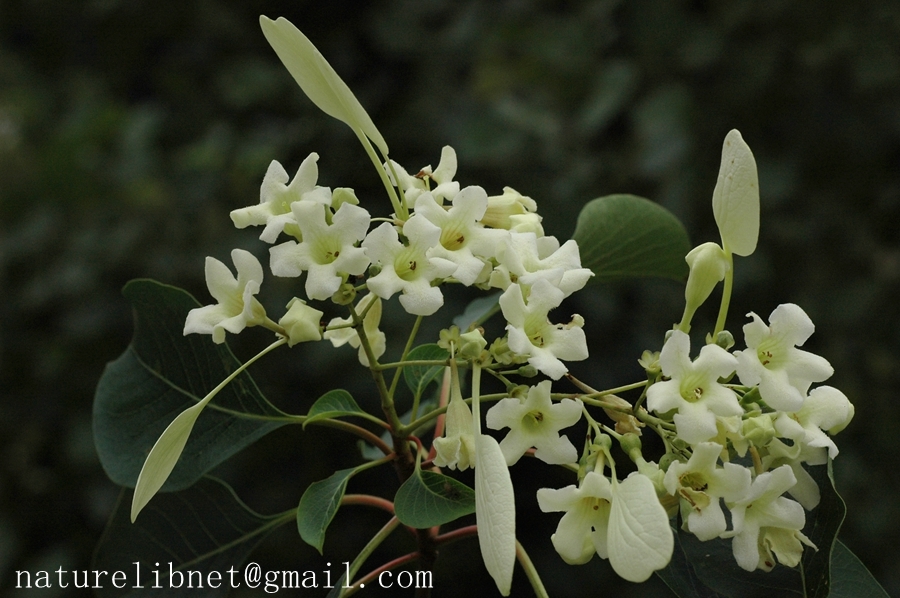- Scientific Name: Emmenopterys henryi Oliver
- Ref:Hooker’s Icon. Pl. 19: t. 1823. 1889.
- Synonym: Mussaenda cavaleriei H. Léveillé; M. mairei H. Léveillé.
- Chinese Common Name:
- Family: Rubiaceae
- Genus: Emmenopterys
- Distribution: Forests in valleys; 400-1600 m. Anhui, Fujian, Gansu, Guangdong, Guangxi, Guizhou, Henan, Hubei, Hunan, Jiangsu, Jiangxi, Shanxi, Sichuan, Yunnan, Zhejiang.
- Photo: 08/18/2009,Baotianman,Henan
Trees, deciduous, to 30 m tall, to 1 m d.b.h., with grayish brown bark; branches angled to terete, often lenticellate, rather stout, glabrous. Petiole 20-80 mm, glabrous to hirtellous or strigillose; leaf blade drying papery or leathery and paler below, broadly elliptic, broadly ovate, or ovate-oblong, 6-30 × 3.5-14.5 cm, adaxially glabrous or sparsely strigose, abaxially glabrous to strigillose or hirtellous throughout or only on principal veins, base acute to cuneate or obtuse, apex acute, abruptly acuminate, or rarely obtuse; secondary veins 5-9 pairs, in abaxial axils with pilosulous domatia; stipules triangular-ovate, 6-10 mm, acute. Inflorescences hirtellous to glabrous; peduncle 2.5-5.5 cm; branched portion 5-18 × 6-20 cm; bracts caducous, narrowly triangular, 1-8 mm, acute; pedicels 1.5-5 mm. Calyx puberulent to usually glabrous; ovary portion ellipsoid, 3-4 mm; lobes suborbicular, 2-2.2 mm, ciliate, rounded; calycophyll white, pink, or pale yellow, blade drying papery or leathery, spatulate to broadly elliptic or ovate, 1.5-8 × 1-6 cm, parallel veined, on stipe 1-3 cm. Corolla outside densely tomentulose; tube 13-23 mm, narrow at base then quickly dilated near middle; lobes suborbicular, 5-7 mm, densely ciliolate, rounded. Capsules 3-5 × 1-1.5 cm, smooth or longitudinally weakly ribbed; seeds 6-8 × 1.5-2 mm, broadly winged. Fl. Jun-Aug, fr. Aug-Nov.(Flora of China)
